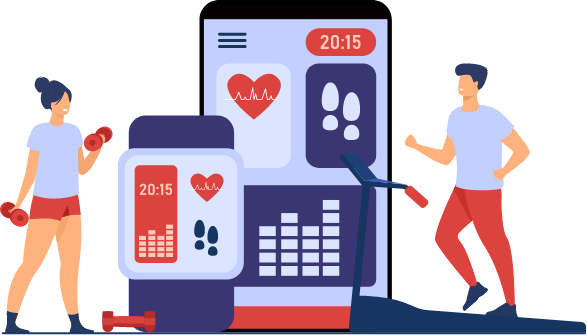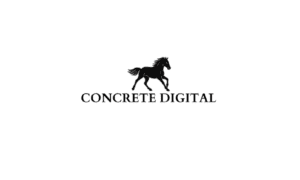Running a gym or fitness studio has always been about more than providing equipment and classes. Behind every successful fitness business is a system for managing memberships, payments, staff, and scheduling. But the way gyms handle these tasks has changed dramatically over the years.
The journey from simple spreadsheets to advanced gym management software tells a story not just about technology, but about how fitness businesses have adapted to rising customer expectations and new industry challenges.
The Early Days: Spreadsheets and Paper Records
In the past, many gyms relied on paper sign-up sheets, filing cabinets, and manual ledgers to track memberships and payments. It worked, but it was slow, error-prone, and hard to scale.
When computers became more common in small businesses, spreadsheets like Microsoft Excel became the go-to tool for gym owners. Membership lists, payment due dates, and class schedules could all be typed into cells and sorted. Compared to paper, spreadsheets offered more flexibility and better record-keeping.
But spreadsheets had limits. They didn’t send reminders when payments were overdue. They didn’t automatically renew memberships. And they didn’t make booking classes any easier for members. As gyms grew, so did the complexity — and spreadsheets started to feel more like a burden than a solution.
The Rise of Early Gym Management Software
By the early 2000s, purpose-built software for gyms began to appear. These early systems were installed on computers in the office and allowed staff to track members, process payments, and manage schedules in a more structured way.
For gym owners, this was a big step forward. Instead of juggling multiple spreadsheets, they had a single database for key information. However, these systems still required a lot of manual input, and they often lacked flexibility. Updates had to be installed on-site, and features were limited compared to what gyms really needed.
The Shift to Cloud-Based Platforms
The real turning point came when gym management software moved to the cloud. Suddenly, gym owners and staff could access their systems from anywhere — whether at the front desk, at home, or even on a mobile device.
Cloud-based platforms made it easier to scale, easier to update, and more secure. Automatic billing, online booking, and member portals became standard features. Instead of staff spending hours on admin, much of the process could now be automated.
For members, this shift was even more powerful. They could sign up online, book classes through apps, and pay seamlessly without worrying about missed invoices.
Smart Software for a Competitive Industry
Today, gym management software has evolved into full-scale business platforms. Modern systems go beyond just handling admin — they play an active role in helping gyms compete and grow.
Some of the most important innovations include:
Automated Communication
Keeping members engaged is one of the biggest challenges for gyms, and software-driven communication has become a game-changer. Automated systems can send reminders about upcoming classes, prompt members to renew their subscriptions, or re-engage clients who haven’t visited in a while. Instead of staff manually sending emails or making phone calls, the software does it automatically, saving time while increasing consistency.
This kind of proactive outreach can also be personalised. For example, a member who usually attends evening classes might get a message if a new session is added at their preferred time. Someone who hasn’t been active for a month might receive a motivational message or a discount to encourage them back. By automating communication, gyms create a sense of connection without overloading staff with repetitive tasks.
Access Control
Access control has moved far beyond a receptionist with a checklist. Modern gym software integrates with keycards, fobs, or even mobile apps to grant members secure and seamless entry. This not only improves the member experience but also reduces overhead costs by limiting the need for constant front-desk staffing.
For 24-hour gyms, automated access control is essential. Members can come and go as they please, while the software logs their visits in real time. Owners can monitor who is using the facility, set access restrictions, and even limit entry to certain areas like VIP zones or group studios. The result is a safer, more flexible environment that matches the expectations of today’s fitness consumers.
Analytics and Reporting
In the past, gym owners often had to make decisions based on gut feeling. Now, software provides detailed analytics and reporting that take the guesswork out of management. These tools show exactly how many members attended each class, how revenue is trending, which trainers are in demand, and even what times of day are busiest.
The insights go beyond raw numbers. Advanced reporting can reveal patterns, such as whether new members are likely to drop off after three months or whether a price adjustment improved retention. With this knowledge, managers can make data-driven decisions, optimising schedules, pricing, and marketing efforts. For a competitive industry where margins can be tight, having accurate data at hand can be the difference between growth and stagnation.
Marketing Integrations
Attracting new members and retaining existing ones requires consistent marketing, and gym software is increasingly built to support that effort. Many platforms now include marketing integrations, connecting directly with email marketing services, social media tools, or referral programs.
This means gyms can create campaigns, track performance, and even automate loyalty programs all from the same dashboard they use for scheduling and billing. For example, a referral promotion can be set up where current members automatically get a discount if their friend signs up. Campaign performance is tracked instantly, helping gyms see which strategies are working.
For smaller businesses without dedicated marketing staff, this built-in functionality levels the playing field. Instead of outsourcing everything, gyms can manage promotions directly within their management system, reducing costs and improving efficiency.
Mobile-First Experiences
Modern consumers live on their phones, and fitness members are no different. Mobile-first features in gym management software have transformed how members interact with their gym. From signing up for memberships to booking classes and making payments, almost everything can be done through a branded mobile app or mobile-optimised portal.
This convenience has become a basic expectation. Members no longer want to call the front desk or fill out paper forms — they want to tap a few buttons and get it done instantly. Mobile apps can also deliver push notifications, fitness challenges, and digital check-ins, creating a smoother and more engaging experience.
For gyms, this level of convenience builds loyalty. A member who can easily book a last-minute class or manage their subscription on the go is far less likely to cancel than one who finds the process frustrating. Mobile-first experiences don’t just meet expectations — they set gyms apart in an increasingly competitive market.
Bringing It All Together
What makes these innovations so powerful is how they work in combination. Automated communication keeps members engaged, access control ensures seamless entry, analytics guide smart decisions, marketing tools attract and retain clients, and mobile-first design ties it all together in the palm of a member’s hand.
In a highly competitive fitness industry, these features are no longer “nice to have” — they’re expected. Members want convenience and flexibility, and gym owners need data-driven insights to stay ahead. The gyms that embrace these innovations are positioning themselves not just to survive but to thrive in the years ahead.
The Role of Reviews and Feedback
As the market for gym software has expanded, so have the options available. For fitness businesses, choosing the right platform can feel overwhelming. That’s where peer reviews play an increasingly important role.
Real feedback from gym owners and managers provides insight into how different systems perform in practice, not just in marketing brochures. Platforms like G2 give fitness professionals a way to compare solutions, read about real experiences, and find the best fit for their business.
Checking reviews on G2 before investing in a software solution has become a common step — it helps owners avoid trial and error, and instead choose software that matches their needs. Explore reviews on G2 to see how gyms are using modern platforms to simplify their operations.
Looking Ahead
The evolution of fitness software reflects a broader trend: technology is no longer just supporting businesses, it’s shaping the member experience itself.
What began as a way to track payments and memberships has become a tool for building stronger communities, improving retention, and delivering convenience that members now expect.
As we move deeper into 2025, the next wave of innovation will likely involve even smarter automation, AI-driven insights, and tighter integration with wearable devices and health apps. Gyms that embrace these tools will not only save time on admin but also offer members a more connected, personalised fitness journey.
Final Thoughts
From spreadsheets to smart gym platforms, the fitness industry has come a long way. Each step forward has reduced admin headaches and freed up staff to focus on what matters most: helping members achieve their goals.
For gym owners today, software is not just a tool — it’s a foundation for growth, retention, and long-term success.



































